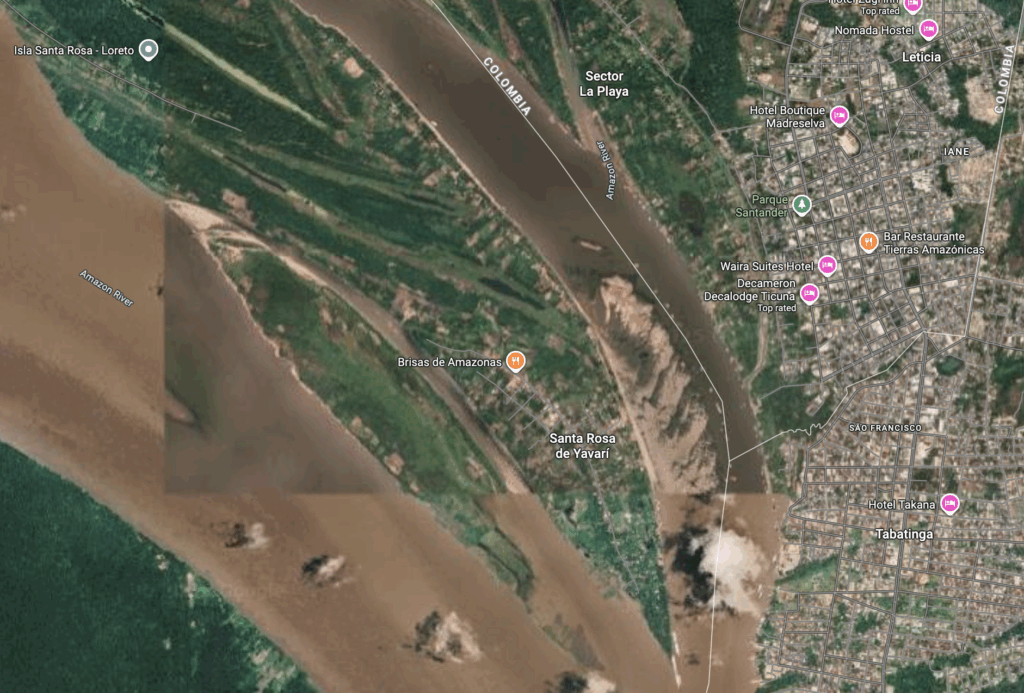On Thursday, Colombian president Gustavo Petro reignited a long-running border dispute with Peru, saying he did not recognize its claim to the Santa Rosa Island on the Amazon River.
The disagreement dates to the mid-20th Century, when changing water levels in the Amazon River uncovered a new island on the border between Peru and Colombia, an area previously governed by a 1922 bilateral treaty.
On Thursday, the president broke tradition by giving an annual independence day address in Leticia, a town of 60,000 on the Amazon river which borders Peru and Brazil. He used the opportunity to criticize Peru’s congress for formalizing Santa Rosa’s legal status in June by declaring it a district of the country’s Loreto province.
“Colombia does not recognize Peru’s sovereignty over the so-called Santa Rosa Island and does not recognize the de facto authorities imposed in the area,” said Petro in his speech.
Hours later, Peru’s Prime Minister, Eduardo Arana, visited Santa Rosa Island – home to some 3,000 people, most of whom identify as Peruvian – in a show of solidarity. His government maintains the island is part of the Chinería Island, which was assigned to Peru in the 1922 Salomón-Lozano Treaty signed by both countries.

Colombia’s Foreign Ministry says the island is independent of Chinería and is on Colombia’s side of the border, which was established in 1922 as the deepest point of the river, a boundary that has shifted south since then, benefiting Colombia.
“I do think that the Colombian government has some merits in the case,” said Sergio Guzmán, Director at Colombia Risk Analysis, a Bogotá-based political risk consultancy.
He explained that Petro’s claims that the border is south of Santa Rosa is correct according to the 1922 treaty.
But the analyst questioned Petro’s decision to take a stand on this issue.
“What’s very contradictory is how the government seems very willing to cede sovereignty along the border with Venezuela, but all of a sudden, it’s super defensive of our national borders and boundaries with Peru,” said Guzmán.
Colombia’s eastern border with Venezuela is largely controlled by non-state armed groups, some of which are known to work with the Venezuelan government. Petro also recently announced a bi-national zone spanning western Venezuela and eastern Colombia.
Guzmán suggested Petro’s adoption of the Santa Rosa issue reflects deeper frictions with the Peruvian government.
“[The Petro administration] has been very reticent to have any sort of relationship with Peru after Pedro Castillo was ousted from government,” said the analyst, referring to the impeachment of the leftist president and Petro ally in 2022.
But the island also has strategic importance, as the sediment build up on Santa Rosa threatens to cut off Colombia’s access to the Amazon river, important for commercial and defense purposes.
Guzmán said the issue is unlikely to escalate and believes the two governments can hash it out through diplomatic channels.
In a statement, Peru’s Foreign Ministry said: “Peru is a country that knows how to engage in dialogue and resolve problems peacefully.”
“However, we have always been solid in the defense of our territory and interests,” it added.
Featured image description: Petro at Leticia’s Independence Day celebration.
Featured image credit: @infopresidencia via X
The post Why is Colombia rehashing a decades-old border dispute with Peru? appeared first on Latin America Reports.
